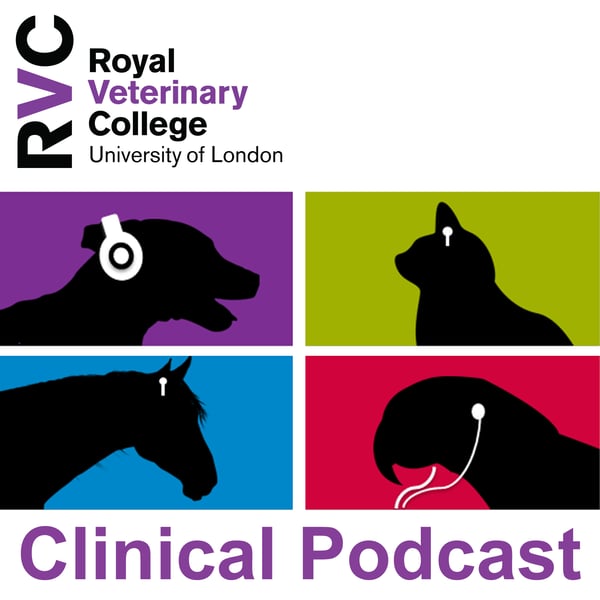81 Technical aspects of ultrasonography
Veterinary Clinical Podcasts
Dominic Barfield
5 • 643 Ratings
🗓️ 29 June 2018
⏱️ 51 minutes
🧾️ Download transcript
Summary
Back in Brian’s office as the studio was busy, different microphones though luckily a fabulous guest, Nell Fitzgerald, one of our lecturers in diagnostic imaging here at the RVC. We have a chat about the technical aspects of ultrasound and tips on how to get the best out of your machine if you are starting off, or if you are experienced but often wondered what those buttons are meant to do. We hope that you enjoy.
There are some ultrasound courses run through the RVC CPD (other course providers are available, though not sure that they would all be given a 5-star rating!)
https://www.rvc.ac.uk/study/cpd
Some papers of interest:
Lamb C, Boswood A Doppler ultrasound examination in dogs and cats
In Practice 2005;27:183-189.
Lamb C Doppler ultrasound examination in dogs and cats In Practice 2005;27:238-247.
If you have any comments about this podcast, please get in touch: email [email protected]; tweet @dombarfield. We would greatly appreciate your time to rate us on Apple podcast or Acast and kindly write us a review.
Transcript
Click on a timestamp to play from that location
| 0:00.0 | Good day, Dominic Barfield here and this is the RVC Clinical Podcast. |
| 0:03.0 | Thank you for listening and thank you for subscribing on your smartphone or generic fruit base device. |
| 0:06.0 | Really grateful for you taking the time to download and listen to this RVC podcast. |
| 0:10.0 | We don't ask for much in return. I'd be incredibly grateful if you could pop to Apple Podcasts or ACAST and leave us review. |
| 0:15.0 | Obviously a five-star review would be great and we'd appreciate if you could take a couple of minutes time to do this. Sadly, there's not really a lot of reviews recently that we can't tell you or read out. |
| 0:26.6 | But anyway, today, thankfully we've got Brian back. |
| 0:30.6 | We're in his office again using a bit of different equipment, so it might sound a bit strange. |
| 0:36.6 | But we're blessed to be joined by Neil Fitzgerald. |
| 0:40.3 | Thank you, Neil for coming in. |
| 0:41.3 | Now is one of our lectures in diagnostic imaging. |
| 0:45.3 | So, a rare thing now at universities to have time-nostic images, says... |
| 0:50.3 | We're a dying breed. |
| 0:52.3 | Too much tele-radiology going on. |
| 0:54.7 | But anyway, we'll move on from that. |
| 0:58.3 | So we thought, with your assistant, |
| 1:01.8 | we'll talk about the technical side of using ultrasound in practice. |
| 1:05.5 | Because you do a lot of continuing education and training bits. |
| 1:10.0 | And you say like common things come up with using your ultrasound and common ways or simple ways that we can make people better. |
| 1:20.6 | Yeah, and I think getting the most out of your machine, we're paying a lot of money for these machines now and they're getting better and better and the image quality is much better than it was maybe 10 years ago. |
| 1:30.3 | And I suppose the basic things that people forget, you know, if we start at the very, very beginning, you know, you get your animal in,icent about clipping. They must be clipped. We need a big area of clipping. We can't do this with hair and with gel and it's just going to be a mess. |
| 1:49.0 | And patient positioning, having some people there to hold your animal, make sure it's still, you're not trying to wrestle with them. |
| 1:56.0 | And equally, if it's feasible, then you have an animal that's healthy enough, just sedate it. It's going to be so much easier. |
... |
Please login to see the full transcript.
Disclaimer: The podcast and artwork embedded on this page are from Dominic Barfield, and are the property of its owner and not affiliated with or endorsed by Tapesearch.
Generated transcripts are the property of Dominic Barfield and are distributed freely under the Fair Use doctrine. Transcripts generated by Tapesearch are not guaranteed to be accurate.
Copyright © Tapesearch 2025.

